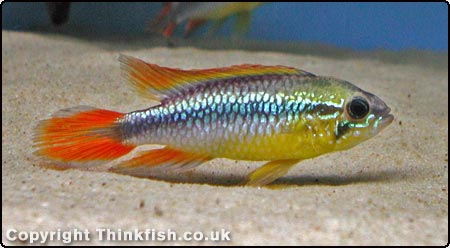
Apistogramma agassizii
FAMILY
Cichlidae
TAXONOMY
Geophagus (Mesops) agassizii Steindachner, 1875, Curupira, Codajas,
Rio Poti de Sao Joao, Lago Maximo, and Lago Manacapuru,
Brazil.
OTHER COMMON NAMES
German: Agassiz Zwergbuntbarsch.
PHYSICAL CHARACTERISTICS
Maximum length 2 in (5 cm). Dorsal and anal fins somewhat
elongate, caudal fin spade shaped. Head somewhat rounded.
Female coloration is lemon yellow; males brilliantly colored
with yellows and blues anteriorly, a dark midlateral band, and
red, black, and white bands on posterior fins.
DISTRIBUTION
Amazon basin along the Amazon River from Peru to the
Capim River in Brazil.
HABITAT
Clear, black, and whitewater rivers.
BEHAVIOR
Males exhibit ritualized
BEHAVIOR
s in defense of their territories;
females in the harem of a single male compete for his attention.
FEEDING ECOLOGY AND DIET
Feeds on aquatic macroinvertebrates.
REPRODUCTIVE BIOLOGY
Eggs laid in caves, or in flowerpots in aquaria; they hatch in
about four days. Practices harem polygyny.
CONSERVATION STATUS
Not listed by the IUCN.
SIGNIFICANCE TO HUMANS
Owing to its brilliant colors and peaceable demeanor, this fish
is popular in the aquarium trade.
Photo Gallery of - Agassiz’s dwarf cichlid

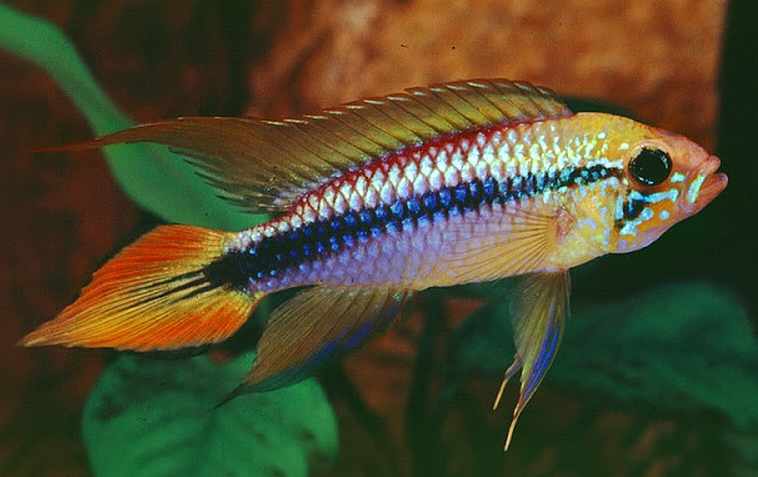
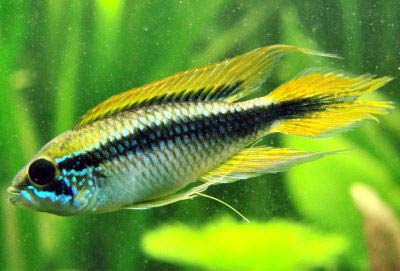
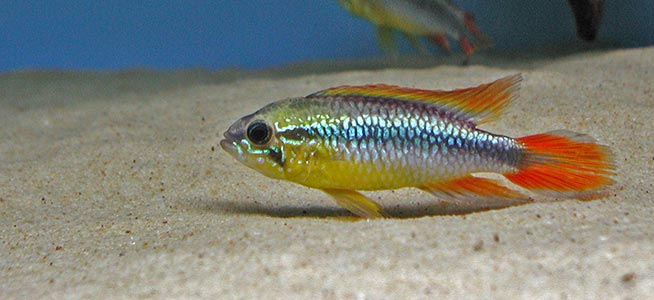
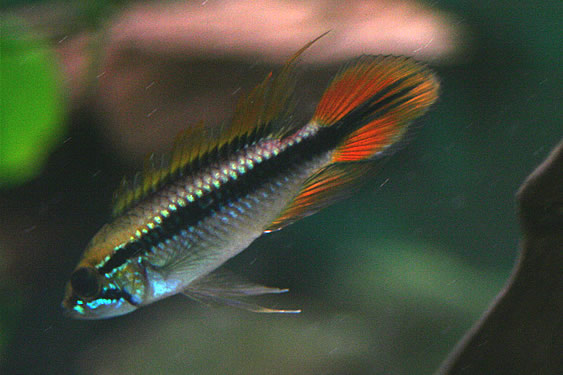
 Animalia Life
Animalia Life